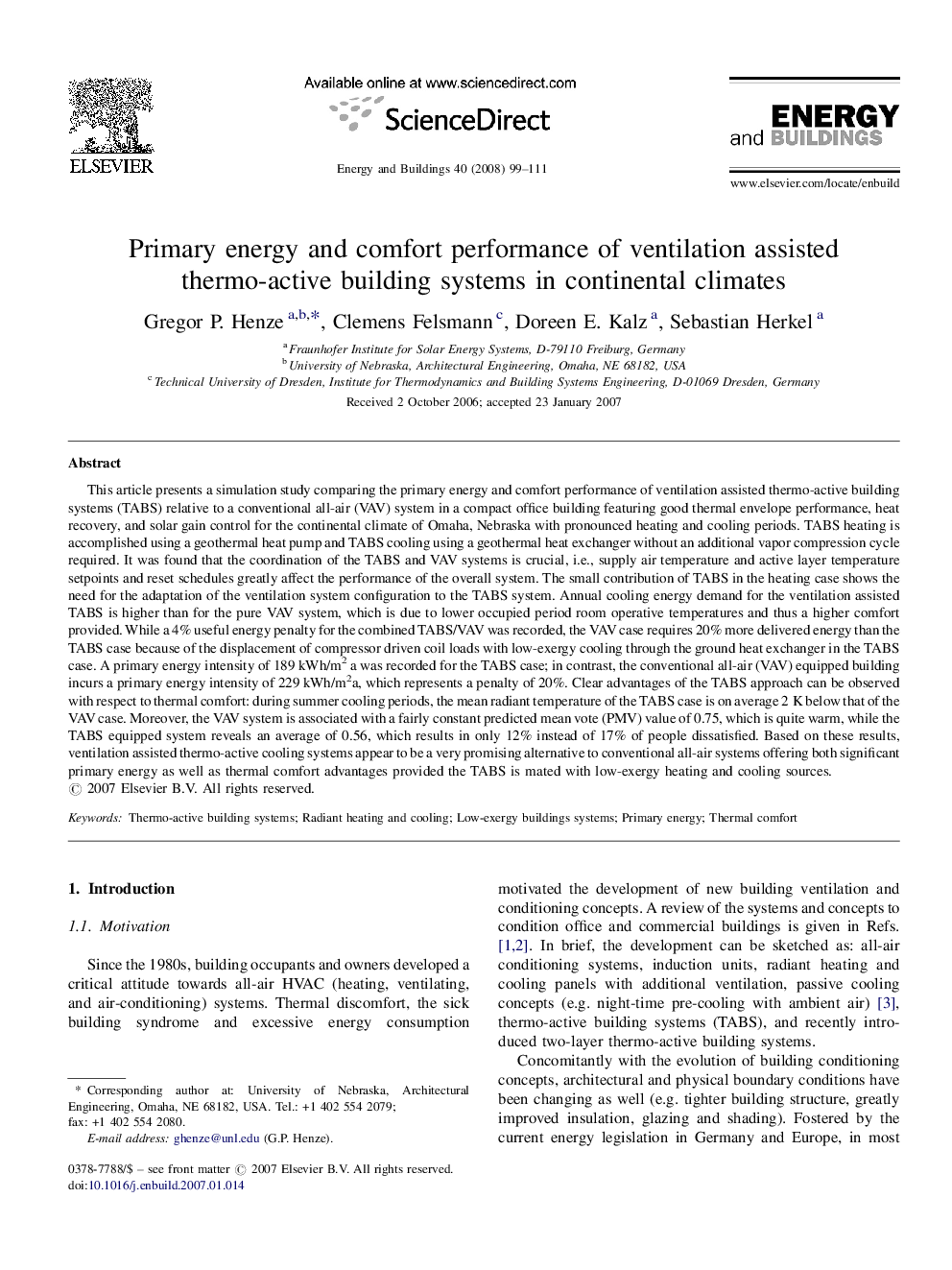| کد مقاله | کد نشریه | سال انتشار | مقاله انگلیسی | نسخه تمام متن |
|---|---|---|---|---|
| 265200 | 504138 | 2008 | 13 صفحه PDF | دانلود رایگان |

This article presents a simulation study comparing the primary energy and comfort performance of ventilation assisted thermo-active building systems (TABS) relative to a conventional all-air (VAV) system in a compact office building featuring good thermal envelope performance, heat recovery, and solar gain control for the continental climate of Omaha, Nebraska with pronounced heating and cooling periods. TABS heating is accomplished using a geothermal heat pump and TABS cooling using a geothermal heat exchanger without an additional vapor compression cycle required. It was found that the coordination of the TABS and VAV systems is crucial, i.e., supply air temperature and active layer temperature setpoints and reset schedules greatly affect the performance of the overall system. The small contribution of TABS in the heating case shows the need for the adaptation of the ventilation system configuration to the TABS system. Annual cooling energy demand for the ventilation assisted TABS is higher than for the pure VAV system, which is due to lower occupied period room operative temperatures and thus a higher comfort provided. While a 4% useful energy penalty for the combined TABS/VAV was recorded, the VAV case requires 20% more delivered energy than the TABS case because of the displacement of compressor driven coil loads with low-exergy cooling through the ground heat exchanger in the TABS case. A primary energy intensity of 189 kWh/m2 a was recorded for the TABS case; in contrast, the conventional all-air (VAV) equipped building incurs a primary energy intensity of 229 kWh/m2a, which represents a penalty of 20%. Clear advantages of the TABS approach can be observed with respect to thermal comfort: during summer cooling periods, the mean radiant temperature of the TABS case is on average 2 K below that of the VAV case. Moreover, the VAV system is associated with a fairly constant predicted mean vote (PMV) value of 0.75, which is quite warm, while the TABS equipped system reveals an average of 0.56, which results in only 12% instead of 17% of people dissatisfied. Based on these results, ventilation assisted thermo-active cooling systems appear to be a very promising alternative to conventional all-air systems offering both significant primary energy as well as thermal comfort advantages provided the TABS is mated with low-exergy heating and cooling sources.
Journal: Energy and Buildings - Volume 40, Issue 2, 2008, Pages 99–111